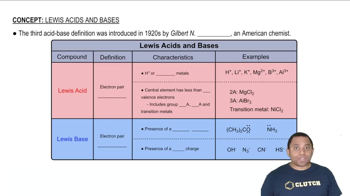Here are the essential concepts you must grasp in order to answer the question correctly.
Buffer Solutions
Buffer solutions are mixtures that resist changes in pH when small amounts of acid or base are added. They typically consist of a weak acid and its conjugate base, or a weak base and its conjugate acid. In this case, the buffer is composed of hypochlorous acid (HClO) and sodium hypochlorite (NaClO), which help maintain the pH despite the addition of HBr.
Recommended video:
Henderson-Hasselbalch Equation
The Henderson-Hasselbalch equation is a mathematical formula used to calculate the pH of a buffer solution. It is expressed as pH = pKa + log([A-]/[HA]), where pKa is the negative logarithm of the acid dissociation constant, [A-] is the concentration of the conjugate base, and [HA] is the concentration of the weak acid. This equation is essential for determining the pH after the addition of HBr.
Recommended video:
Henderson-Hasselbalch Equation
Acid-Base Neutralization
Acid-base neutralization occurs when an acid reacts with a base to form water and a salt, resulting in a change in pH. In this scenario, HBr, a strong acid, will react with the weak base component of the buffer (NaClO) to produce HClO and NaBr. Understanding this reaction is crucial for calculating the new concentrations of the buffer components and the resulting pH.
Recommended video:
 Verified step by step guidance
Verified step by step guidance


